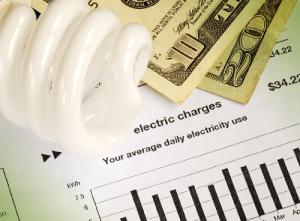What Affordability Means

Affordability. Seems like everybody in our industry these days is talking about affordability. It also seems that there are multiple definitions of the term, none all that precise.
Whenever confronted by such confusions, I go to the numbers first.
Since 1959, when the U.S. Commerce Department started tracking this, residential electric bills as a percentage of all consumer expenditures, nationally, have varied between 1.25 percent in 2021 and 2.27 percent in 1982. In 2022, they were near the low end of the range, at 1.34 percent.
This percentage, a “share of wallet” measure, hasn’t been as high as 1.40 percent since 2015, and hasn’t been as high as 1.50 percent since 2011. So, on average, and nationally, residential bills are now comparatively affordable, when looked at historically.
Indeed, the only three historical periods since 1959 when electricity’s share of consumer expenditures spiked up were: when OPEC drove up oil prices in the late nineteen seventies; when nuclear plant construction costs ballooned in the early and mid-nineteen eighties; when Hurricane Katrina drove up natural gas prices in the mid and late two thousand aughts.
Russia’s invasion of Ukraine last year did temporarily drive up gas prices and with it, electricity’s share of consumer expenditures through the first months of this year. Though that short-term trend is already moderating.
Shall the energy transformation now underway increase the electricity industry’s costs by so much that electricity’s share of consumer expenditures will increase to significantly higher percentages? To 1.40 percent? To 1.50 percent, or even higher? If so, that development, a conscious rise in electricity’s share, would be unprecedented.
Of course, such average metrics mask the challenges of individual households making ends meet, particularly low-income households.
Since 1984, when the U.S. Labor Department started tracking this, for the lowest income quintile of American households, residential electric bills as a percentage of all consumer expenditures, this time on an out-of-pocket basis, have varied between 3.40 percent in 2002 and 4.57 percent in 2010. In 2022, they were near the low end of the range, at 3.69 percent. (In contrast, in 2022, this percentage for the highest income quintile of American households was only 1.55 percent.)
For these lowest income quintile households, since 1984, their residential electric bills nearly tripled; by 2.87 times, specifically. But their consumer expenditures overall have also nearly tripled; by 2.86 times, specifically. So, electricity’s share of wallet for low-income households is more or less unchanged, 2022 versus 1984.
Notably, the average income before taxes of the nation’s lowest income quintile households has nearly quadrupled since 1984 (by 3.98 times, specifically). So, again, on average, and nationally, residential bills are now comparatively affordable, even for our low-income citizens, when looked at historically.
This absolutely does not mean that there aren’t millions of low-income households that find it extremely difficult to pay their bills generally and their electric bills in particular. It does mean though that those households are the ones we really should be focusing on when talking about affordability.



